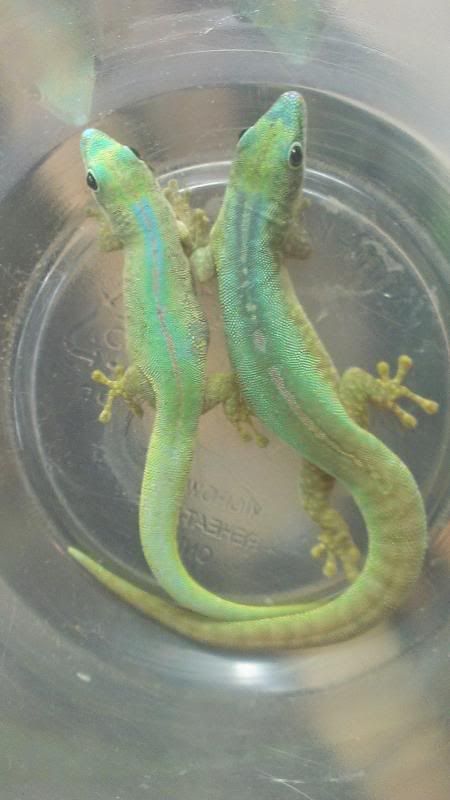mkschaefer
New member
In many Phelsuma species, there are phenotypic differences, most notably size and pattern, between the sexes. I think it would be valuable and interesting to illustrate these differences by posting the following:
1. A picture of the pair together or individual male and female pictures. Both sexes should be included.
2. Species (though we will be able to determine this from the picture, it will be helpful for searches) and locale (if applicable)
3. Ages of the animals (including hatch date, if you know it)
4. Snout-Vent Length or Total Length
5. Short description of other phenotypic differences
6. Short description of observed behavioral differences (this may be highly subjective)
Thank you and I look forward to your posts!
The attached picture is of an unrelated pair of Phelsuma robertmertensi.
Male (on right) hatched on 5/1/2010 and is approximately 12.7cm (5 inches), if not slightly longer.
Female (on left) hatched on 5/3/2010 and is approximately 8.89 cm (3.5 inches).
There is a significant size difference in this species, not just this pair.. The male in this particular pair is 42.86% larger. Though his coloration is more subdued in this picture, the male appears more apt to display his coloration in the enclosure and is more bold than the female.

1. A picture of the pair together or individual male and female pictures. Both sexes should be included.
2. Species (though we will be able to determine this from the picture, it will be helpful for searches) and locale (if applicable)
3. Ages of the animals (including hatch date, if you know it)
4. Snout-Vent Length or Total Length
5. Short description of other phenotypic differences
6. Short description of observed behavioral differences (this may be highly subjective)
Thank you and I look forward to your posts!
The attached picture is of an unrelated pair of Phelsuma robertmertensi.
Male (on right) hatched on 5/1/2010 and is approximately 12.7cm (5 inches), if not slightly longer.
Female (on left) hatched on 5/3/2010 and is approximately 8.89 cm (3.5 inches).
There is a significant size difference in this species, not just this pair.. The male in this particular pair is 42.86% larger. Though his coloration is more subdued in this picture, the male appears more apt to display his coloration in the enclosure and is more bold than the female.

Last edited:





